Promaster Universal Softbox for Built-in Flash is designed to make images taken with the built-in (pop-up) flash of your DSLR more flattering. One of the reasons why pictures from a pop-up flash look unattractive is the size of the flash. Being quite tiny, the build-in flash creates a very small light source, which results in harsh looking shadows. Promaster Universal Softbox for Built-in Flash significantly increases the size of the light source making the shadows look softer and producing better looking pictures.
The attachment design of the Promaster softbox is quite clever. It makes the installation simple while delivering a secure grip. The softbox fits virtually any modern DSLR camera. The unit comes with an installation drawing, in case if you need help figuring out the proper mounting.
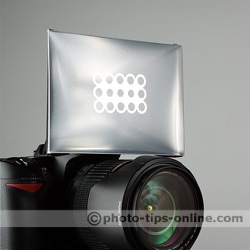 |
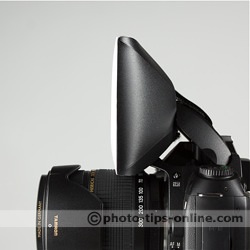 |
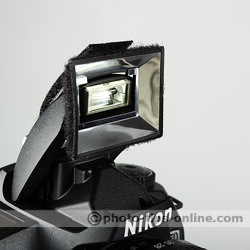 |
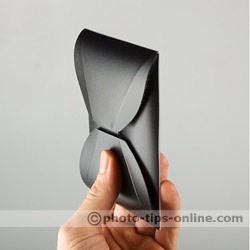 |
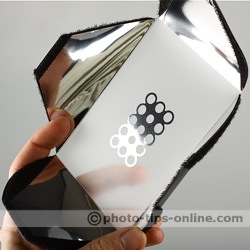 |
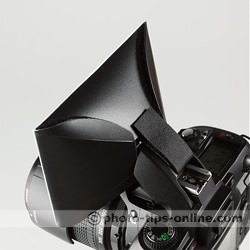 |
The size of the light source matters in relation to the size and the distance to the subject. While Promaster Softbox for Built-in Flash is bigger than the head of a pop-up flash, it is still smaller than a typical portrait subject. Thus, we recommend using it within 6 feet (2 meters) from the subject. Using it from about 2-3 feet (under 1 meter) makes the most sense. (Please refer to Demb Flash Diffuser pop-up flash test for more details.) Getting away from the subject farther makes the using of the Promaster diffuser less beneficial, but it is better to have the softbox on rather than off.
Our tests show that Promaster Universal Softbox for Built-in Flash does a decent job of improving images. The following pictures show the difference between a bare built-in flash and the Promaster Softbox. The camera is placed about 3 feet from the subject. The background is just a couple of inches behind the subject to show the change in the background shadows.
 |
 |
 |
 |
As you can see above, the image from the direct pop-up flash (left) is very harsh, and the image from the Promaster Softbox shows some improvements. The hair shadows on the background are softer as well as the edges of the chin shadow. While there is no "night and day" difference, the right image looks generally more pleasing.
Also, the hot spot is reduced by the reflector at the center of the softbox's front screen. The reflector passes the light through only partially and redirects the rest of it back inside the softbox for further "softening".
Using a flash diffuser reduces the light output of the flash. Since built-in flashes are weak, minimizing the light loss is especially important when diffusing them. Promaster Softbox for Built-in Flash has a mirror-like lining, which minimizes the light loss. Losing less light also means longer lasting camera battery charge.
The following images show Promaster Softbox for Built-in Flash side by side with a couple of competitive products: Speedlight Pro Kit Mini Bounce (left) and LumiQuest Soft Screen (right).
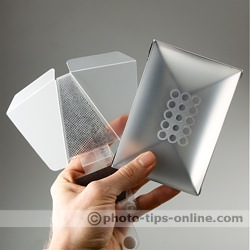 |
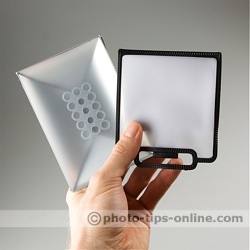 |
To summarize, Promaster Universal Softbox for Built-in Flash is a well-designed diffuser. It fits virtually any camera that features a pop-up flash. It is easy to install and use. It improves the images while minimizing the light loss and making the camera battery last longer.